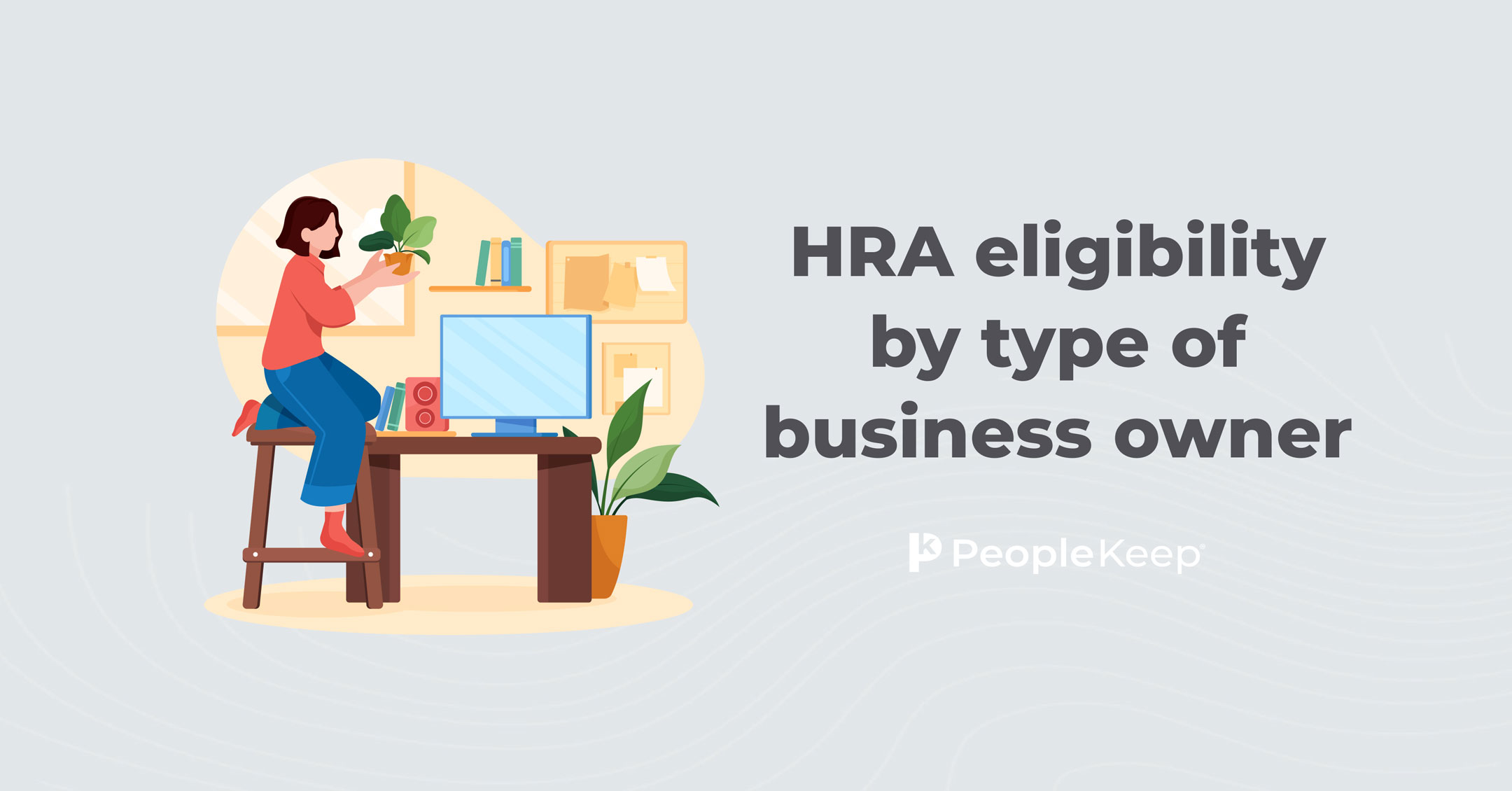How to report employer-sponsored health benefits on Form W-2
By Elizabeth Walker on December 29, 2023 at 9:55 AM
Offering health benefits as part of your compensation package is an excellent way to attract and retain employees. Employers that offer health benefits need to fully understand their income tax reporting obligations to avoid penalties from the IRS. Some health benefits operate on a pre-tax basis, while others operate on a post-tax basis. How you report them on your employees’ W-2 forms will differ depending on the type of benefit you offer.
This blog will walk you through common employer-sponsored health benefits and how to report them on Form W-2. Although our article will guide you through the basics, we recommend contacting a certified public accountant or tax professional for guidance and additional help with your taxes.
Takeaways from this blog post:
- Employers need to understand their reporting obligations for employer-sponsored health benefits on Form W-2 to avoid penalties from the IRS.
- Different types of health insurance benefits, such as traditional employer-sponsored health coverage and health reimbursement arrangements (HRAs), have different reporting requirements on Form W-2.
- Employers report pre-tax health benefits, like flexible spending accounts (FSAs), differently from post-tax health benefits, such as health stipends.
How to report traditional group health insurance on W-2s
Currently covering about 153 million Americans, group health insurance is the traditional way employers offer a health benefit to their employees. In general, group coverage provides medical insurance to a group of people. This means that individuals can’t purchase group health insurance coverage.
Group health plans come with tax advantages for employers and employees. Employer contributions toward health coverage are tax-deductible, while employee contributions are often taken on a pre-tax basis, reducing your employees’ tax liability.
The Affordable Care Act (ACA) requires all employers who provide "applicable employer-sponsored coverage"1 under a group health plan to report the cost of coverage, including the amounts paid by both the employer and the employee, on Form W-2. You list these amounts in Box 12 with Code DD.
Because group health plans are a pre-tax benefit, recording the cost of health coverage on Form W-2 is only for informational purposes. The amount you report doesn’t affect your employees’ tax liability.
How to report health reimbursement arrangements (HRAs) on W-2s
A health reimbursement arrangement (HRA) is a flexible employer-owned health benefit allowing employers to reimburse their employees tax-free for qualified out-of-pocket medical expenses. Unlike other health insurance benefits, only employers can contribute to an HRA.
With an HRA, employers set a monthly allowance to offer their employees. Once an employee submits proof of an eligible qualified expense, the employer reimburses them up to their allowance amount.
Employer contributions are tax-deductible and free of payroll taxes. Employee expense reimbursements are income tax-free as long as they are covered by a health plan that provides minimum essential coverage (MEC).
Your W-2 reporting requirements will differ based on the type of HRA you have. Let’s review your reporting obligations for the three HRAs PeopleKeep offers.
Qualified small employer HRA (QSEHRA)
A qualified small employer HRA (QSEHRA) is for small employers with fewer than 50 full-time equivalent employees (FTEs). With a QSHERA, employees choose the individual health plan coverage that’s best for them and receive reimbursements for their health plan premiums. They can also be reimbursed for qualified out-of-pocket expenses. While there are no minimum contribution limits, QSEHRAs have maximum contribution limits set by the IRS annually.
Unlike other HRAs, the IRS doesn’t consider a QSEHRA a group health plan, so it’s not subject to group health coverage requirements. However, it still has reporting requirements that employers must follow.
Small employers must report their QSEHRA benefit in Box 12, code FF of their employees’ W-2. You should report the total allowance amount each employee was eligible to receive that calendar year, not the actual number of payments or reimbursements the employee received. Employers should only include the allowance for that year, meaning you should exclude rollover amounts from the previous year.
Read our blog to learn more about QSEHRA W-2 reporting.
Individual coverage HRA (ICHRA)
An individual coverage HRA (ICHRA) is for employers of all sizes and can be used to reimburse employees for their individual health insurance premiums and other out-of-pocket expenses. Unlike QSEHRAs, ICHRAs have no maximum contribution limits, and employers can customize the benefit by offering different allowance amounts to different employee classes.
They’re also an excellent option for applicable large employers (ALEs) to satisfy the ACA’s employer mandate as an alternative to traditional group health insurance.
Even though the IRS considers an ICHRA a group health plan, it doesn’t require employers offering an ICHRA to report the ICHRA benefit on their eligible employees' W-2s, unlike employers providing a traditional group health insurance plan. However, employers with an ICHRA must still satisfy other reporting requirements, such as filing Form 1095.
To learn more about other ICHRA reporting requirements, check out our blog.
Group coverage HRA (GCHRA)
Also called an integrated HRA, a GCHRA supplements traditional group health insurance coverage. Only employees enrolled in your group health plan can participate in this type of HRA.
Employees can use their GCHRA allowance to pay for out-of-pocket costs their group plan doesn't fully cover, like deductibles, copays, and more. Like ICHRAs, GCHRAs have no maximum contribution limits, and you can customize allowance amounts by employee class.
You don’t have to report your GCHRA benefit on Form W-2, even though the IRS also considers this type of HRA a group plan. However, you must still follow reporting requirements for the employer-sponsored group health plan coverage you offer alongside the GCHRA. ALEs offering a GCHRA will also still need to fulfill ALE reporting requirements.
How to report health savings accounts (HSAs) on W-2s
Health savings accounts (HSAs) allow employers and employees to contribute pre-tax money to a special savings account that employees can withdraw from to pay for qualifying out-of-pocket medical expenses. Even if the employer sets up the HSA for the employee, employees own the account and can keep employer-contributed funds indefinitely. Like QSEHRAs, HSAs have annual maximum contribution limits set by the IRS.
HSA contributions are tax-deductible, interest and investment gains are tax-free, and employees can withdraw funds for qualified health expenses tax-free. However, employees younger than 65 must pay federal income taxes on withdrawals if they use their HSA money on non-qualified costs, plus a 20% excise tax penalty.
Employers must combine and report employer and pre-tax employee HSA contributions made through payroll on Form W-2 in Box 12 with code W. Even though you must report the aggregate cost of HSA contributions, they’re not taxable income.
How to report a health flexible spending account (FSA) on a W-2
A flexible spending account (FSA) is a type of health benefit that allows employees to use pre-tax money for various eligible expenses. A health flexible spending account, which enables employees to use FSA funds to pay for qualifying medical costs, like copays and prescriptions, is one of the most popular FSA types. However, health insurance premiums are ineligible expenses.
Employer contributions are tax-deductible, and employees can contribute to their FSA through payroll deductions on a pre-tax basis. Combined contributions can’t exceed the annual maximum limit. FSA withdrawals for qualified expenses are tax-free. However, using FSA funds on non-qualifying items makes those funds taxable income for the employee.
In most cases, the IRS doesn’t require you to report employer-contributed healthcare FSA funds on Form W-2. However, suppose you contributed more to an employee’s FSA than they elected to contribute to their FSA via payroll salary reductions. In that case, you must report the amount you contributed on the employee’s W-2.
You don’t need to report the employee’s salary reduction contributions to the FSA as taxable income. However, you should include that amount in Box 14 on their W-2 Form for the employee’s general information2.
How to report health stipends on W-2s
A health stipend is a fixed amount of money employers offer employees to help pay for health insurance—including supplemental plans like dental and vision coverage—and other out-of-pocket medical expenses. You can provide health stipends alongside group health plans, HRAs, HSAs, or FSAs. There are no minimum or maximum contribution limits with stipends, so employers can offer an allowance that’s best for their budget.
Stipends are a post-tax benefit. Employers typically stipend money to an employee’s paycheck as extra income, so you must report them on each employee’s W-2 form at the end of the year. If you offer your health stipend on a reimbursement basis, you can withhold taxes on your employees’ W-2 as imputed income.
You can report imputed income on Form W-2 in Box 12 using Code C and Boxes 1, 3, and 5. Employers must also withhold Social Security and Medicare taxes for stipends.
Which employer-sponsored benefits must be reported on W-2s with Box 12, Code DD?
The below chart can help you determine which benefits you should include on Box 12 on Form W-2:
|
Benefit type |
Box 12 reporting requirements3 |
|
Major medical/group health insurance plan |
Report in Box 12 with Code DD |
|
Group dental plan |
Optional to report in Box 12 |
|
Group vision plan |
Optional to report in Box 12 |
|
Health FSA funded by salary reduction only |
Don’t report in Box 12 |
|
Health FSA with a value that exceeds the employee’s salary reductions |
Report in Box 12 with Code DD |
|
HRA contributions |
You must use Code FF in Box 12 if you offer a QSEHRA |
|
HSA |
Report in Box 12 with Code W |
|
Archer medical savings account (MSA) contributions |
Report in Box 12 with Code R. Use Form 8853 |
|
Hospital indemnity insurance |
Report in Box 12 with Code DD |
|
Employee assistance plan (EAP) |
Report in Box 12 with Code DD if you charge a COBRA premium. |
|
Self-funded plans not subject to COBRA |
Optional to report in Box 12 |
|
Long-term care insurance |
Don’t report in Box 12 |
Conclusion
No matter what health insurance benefits you offer, it’s essential to accurately report your contributions on your employees’ W-2 Forms to avoid costly penalties from the IRS. If it’s your first time fulfilling your tax filing requirements, it can seem intimidating. A certified public accountant or tax professional can provide additional guidance and help you fill out your employees’ W-2 Forms during the tax season so you remain compliant.
If you're interested in offering customized health benefits, PeopleKeep can help! Our HRA administration software makes it easy to manage your benefits compliantly and quickly in just minutes each month.
This article was originally published on January 30, 2017. It was last updated on December 29, 2023.
3. https://www.irs.gov/affordable-care-act/form-w-2-reporting-of-employer-sponsored-health-coverage
Check out more resources
See these related articles

HRA eligibility by type of business owner
Are you a business owner wondering if you can participate in an HRA? Find out if you meet the eligibility criteria with this comprehensive guide.

What is healthcare reimbursement?
Looking to reimburse your employees for their healthcare expenses? Learn everything you need to know about healthcare reimbursement.

Health insurance options for franchises
Are you a franchise owner? Explore your health insurance options with this comprehensive guide, tailored specifically for franchises.



